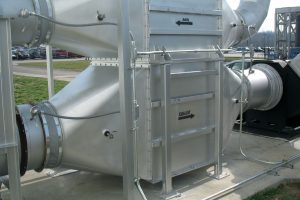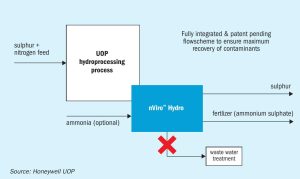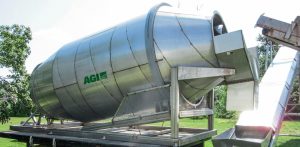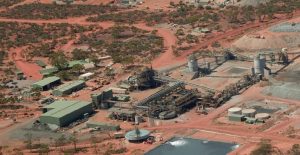
An overview of potash ore processing
We review potash mining and mineral processing methods. Advances in equipment technology and major project investments are highlighted.

We review potash mining and mineral processing methods. Advances in equipment technology and major project investments are highlighted.

We look at current progress towards the greater use of recovered phosphorus, and whether there are lessons to learn from the success of the fast-growing carbon capture industry. We also highlight two pioneering European companies, EasyMining and Glatt, who are racing to bringing recovered phosphorus products to market.

Waste heat recovery in the potash industry is now possible thanks to the availability or robust and reliable heat pipe heat exchangers (HPHEs). Igor Makarenko , Solex Thermal Science, explains how HPHE technology can help potash producers reduce their primary energy consumption and cut their CO 2 emissions.
Maire Group subsidiary MyRechemical has been awarded a feasibility study for the integration of its proprietary waste-tosyngas technology in a large-scale conversion plant that would transform solid municipal waste into 120,000 t/a of sustainable aviation fuel (SAF). MyRechemical would provide the gasification unit to transform solid waste streams into synthesis gas, which would then be converted into low carbon ethanol and then to SAF.

The nickel market has been through a period of unprecedented change over the past few years due to demand for batteries for electric vehicles, with Indonesia becoming a centre for production via high pressure acid leaching.

Honeywell UOP’s nViro Hydro process provides an alternative solution to conventional hydroprocessing waste treatment. Benefits include creating a new revenue stream and reduced capital outlays, operating expenses and water use.

Ag Growth International (AGI) is a leading manufacturer of fertilizer blending systems. Robert Fitzpatrick, AGI’s product segment manager, highlights the latest innovations in fertilizer blending equipment and explains how these contribute to operational efficiency and agricultural productivity.

Sustainable aviation fuel (SAF) is increasingly seen as a vital tool in the aviation sector’s transition to net zero. These drop-in fuels, which can be derived from bio and renewable-derived syngas, are used to dilute the fossil-derived components of fuel and are fully compatible with existing fuel infrastructure. This positions SAF as a convenient and rapid route towards decarbonisation. However, questions remain around its ultimate viability at scale and whether it really can be the ‘silver bullet’ aviation leaders are looking for. We spoke to Paul Ticehurst from Johnson Matthey (JM) to shed some light on SAF and the future role of syngas in aviation.
SunGas Renewables Inc. has formed a new subsidiary, Beaver Lake Renewable Energy, LLC (BLRE), to construct a new green methanol production facility in central Louisiana. The project will have a capacity of 400,000 t/a of green methanol, using gasified biomass, specifically wood fibre from local, sustainably-managed forests as feedstock. The methanol will have a negative carbon intensity through sequestration of the nearly 1.0 million t/a of carbon dioxide produced by the project, which will be executed by Denbury Carbon Solutions. The methanol will then be used as a clean marine fuel by A.P. Moller–Maersk, which is building a fleet of methanol-powered container vessels.

Metso is launching an advanced sustainable battery black mass recycling process as part of its battery minerals technology offering, which covers concentration and hydrometallurgical processing as well as related services. Demand for battery minerals is increasing sharply with the ongoing transition to clean energy sources. An electric car battery weighs approximately 200 kg. Recycling of black mass from batteries with Metso’s process can reduce up to 60% of embedded carbon compared to use of virgin materials and enables the treatment of mechanically separated and shredded batteries for recovering battery raw materials like nickel, cobalt, and lithium, as well as manganese and copper.